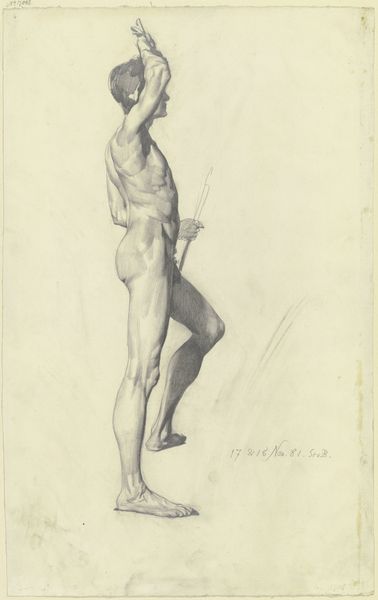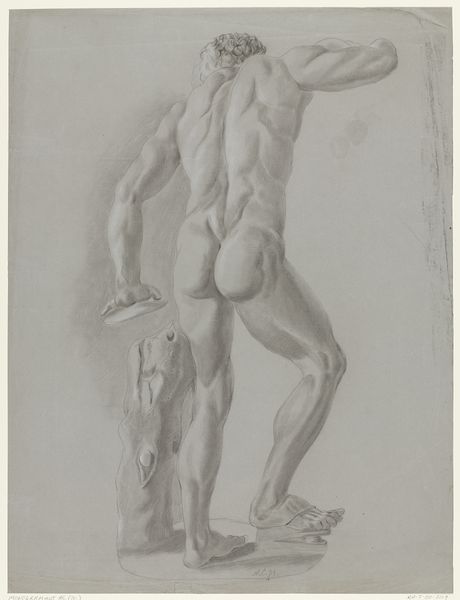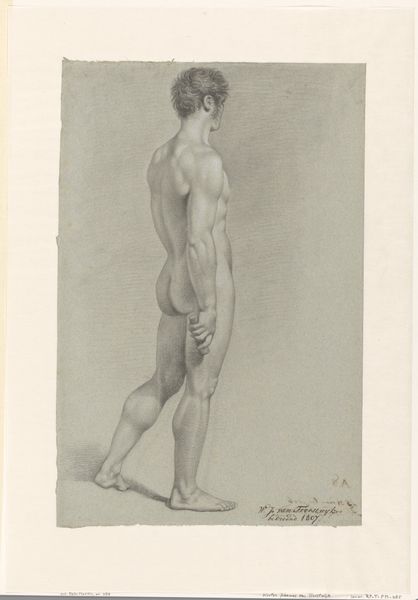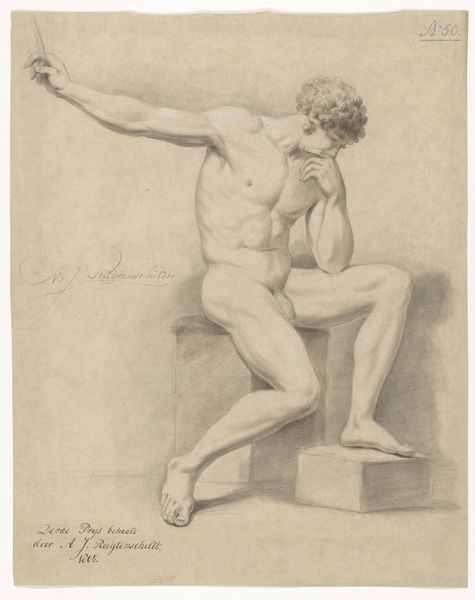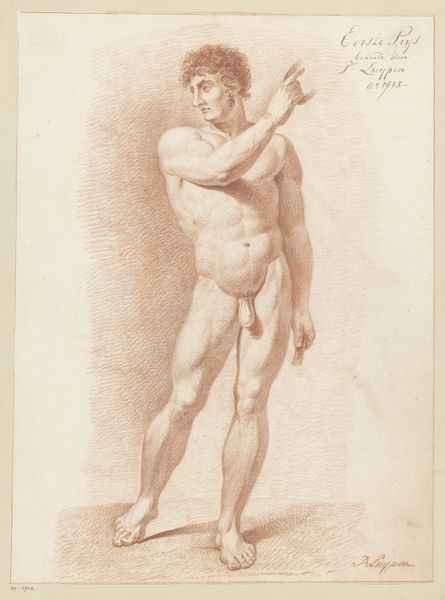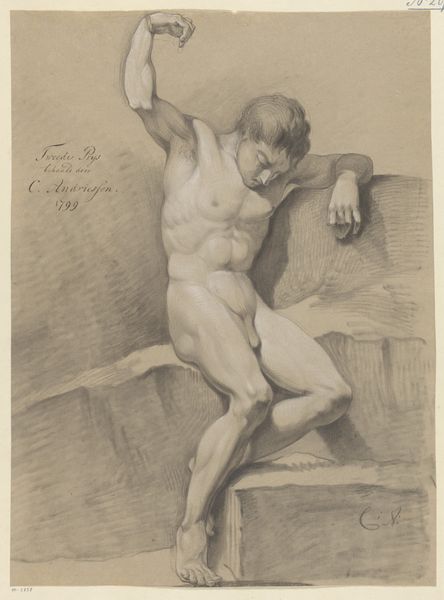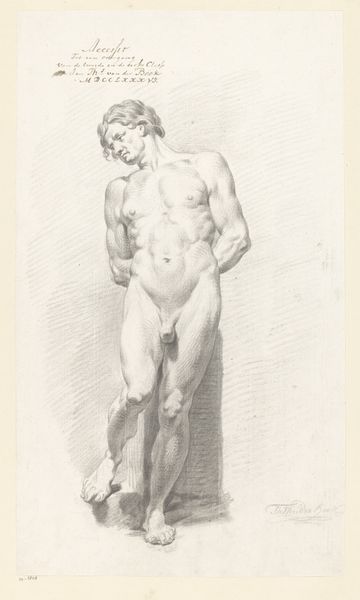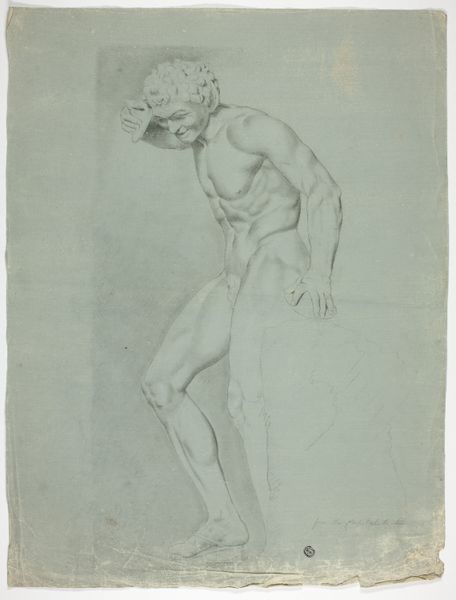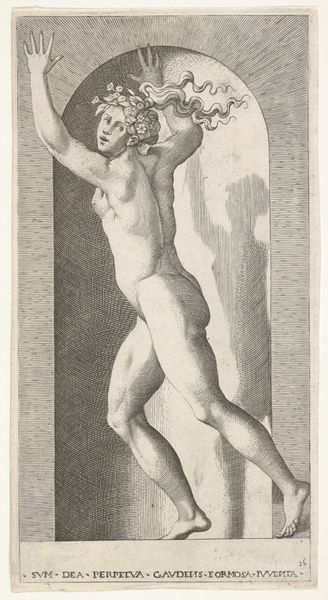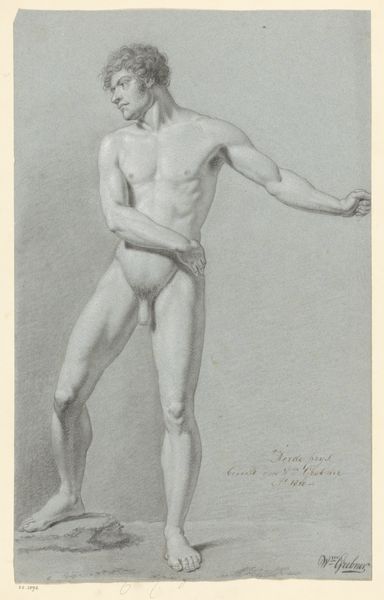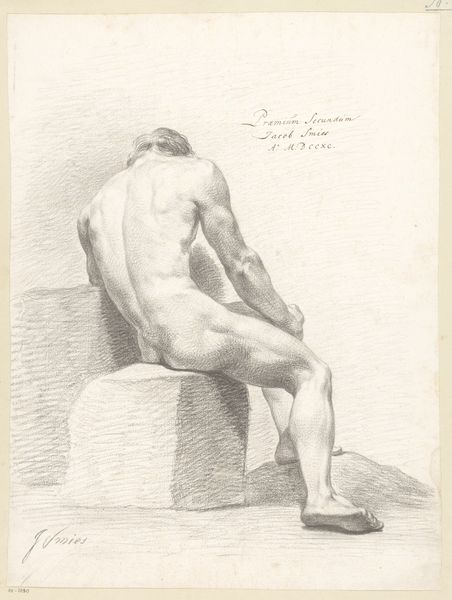
drawing, etching, intaglio
#
portrait
#
pencil drawn
#
drawing
#
ink paper printed
#
etching
#
intaglio
#
figuration
#
pencil drawing
#
academic-art
#
nude
#
realism
Dimensions: height 262 mm, width 217 mm
Copyright: Rijks Museum: Open Domain
Curator: This is "Standing Male Nude," an etching by J. Kuyper from October 1864. What are your first thoughts? Editor: My initial impression is one of subtle power. The limited tonal range creates an introspective mood, almost melancholic, while the figure's pose hints at latent strength. Curator: It’s interesting that you mention the limited palette because the etching process itself requires a high level of skill. The artist meticulously incised lines into a metal plate, controlling the depth and density to achieve that subtle range you mentioned. How do you interpret the use of intaglio printing methods here? Editor: I see how the intentionality in that laborious process is so key here, offering more than a mere depiction of anatomy. Notice how Kuyper models the figure? The play of light across the torso and limbs showcases the classical training in capturing the ideal human form. The controlled strokes articulate the musculature, giving him that almost classical hero kind of power. Curator: Precisely. Kuyper worked during a time when academic art was highly valued and publicly sponsored by states, reflecting societal norms around the human body, realism and its depiction, especially male strength. So to consider this, would you argue that this artist engages or subverts ideas about masculinity within 19th-century Europe? Editor: Perhaps a bit of both. Formally, the nude, as a printed image circulated as part of artistic and scientific academic investigation, but if one inspects a figure in a wider frame then they might read other potential layers. For instance, he isn't posed triumphantly. The figure is self-contained, pensive. It suggests an introspective vulnerability rather than a declaration of power, challenging the viewer's assumption for a "classical male portrait." Curator: And in a world with so much digital media around today, there's something unique about seeing and preserving the original intaglio print of it – as we engage with the artwork itself, we are in effect in contact with a historic relic that would likely otherwise be destroyed or lost to time. Editor: Agreed. There’s an intimate connection that is forged when witnessing, firsthand, not just what an image is, but its physicality, too. Curator: Well, that was quite an illuminating look! I particularly enjoyed how you brought in a formalist perspective, it offers interesting insights into its creation. Editor: Yes, contextualizing it further as a visual historical document truly enriches one's own interaction with "Standing Male Nude."
Comments
No comments
Be the first to comment and join the conversation on the ultimate creative platform.
